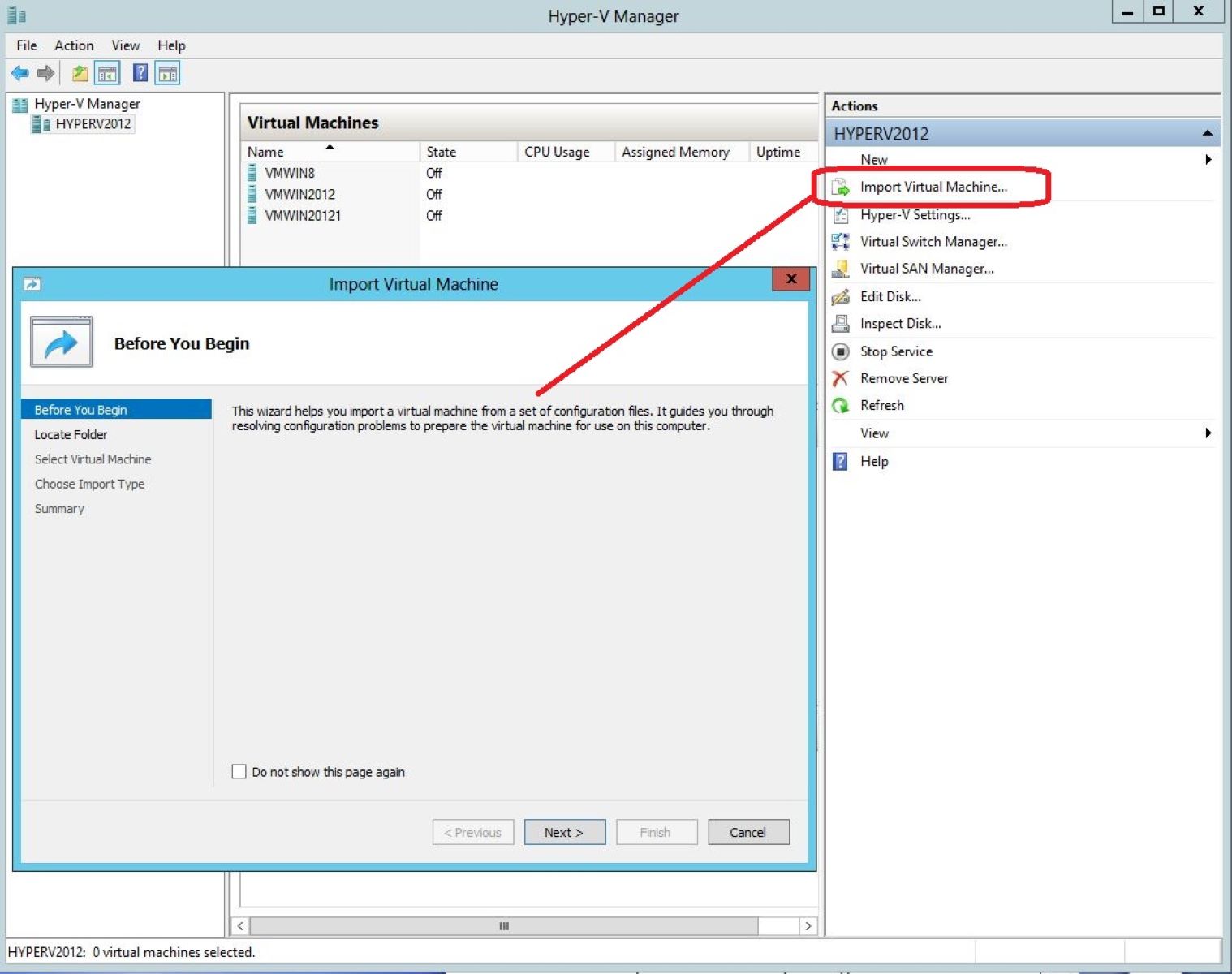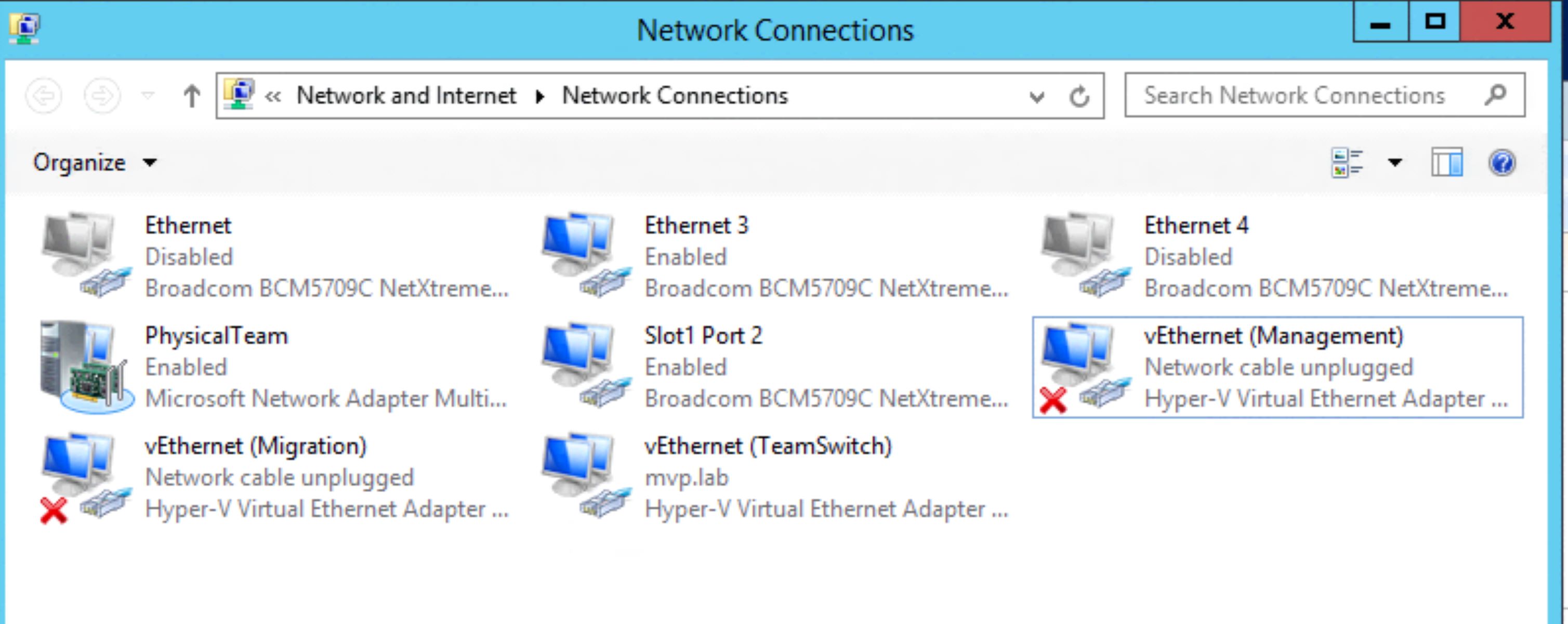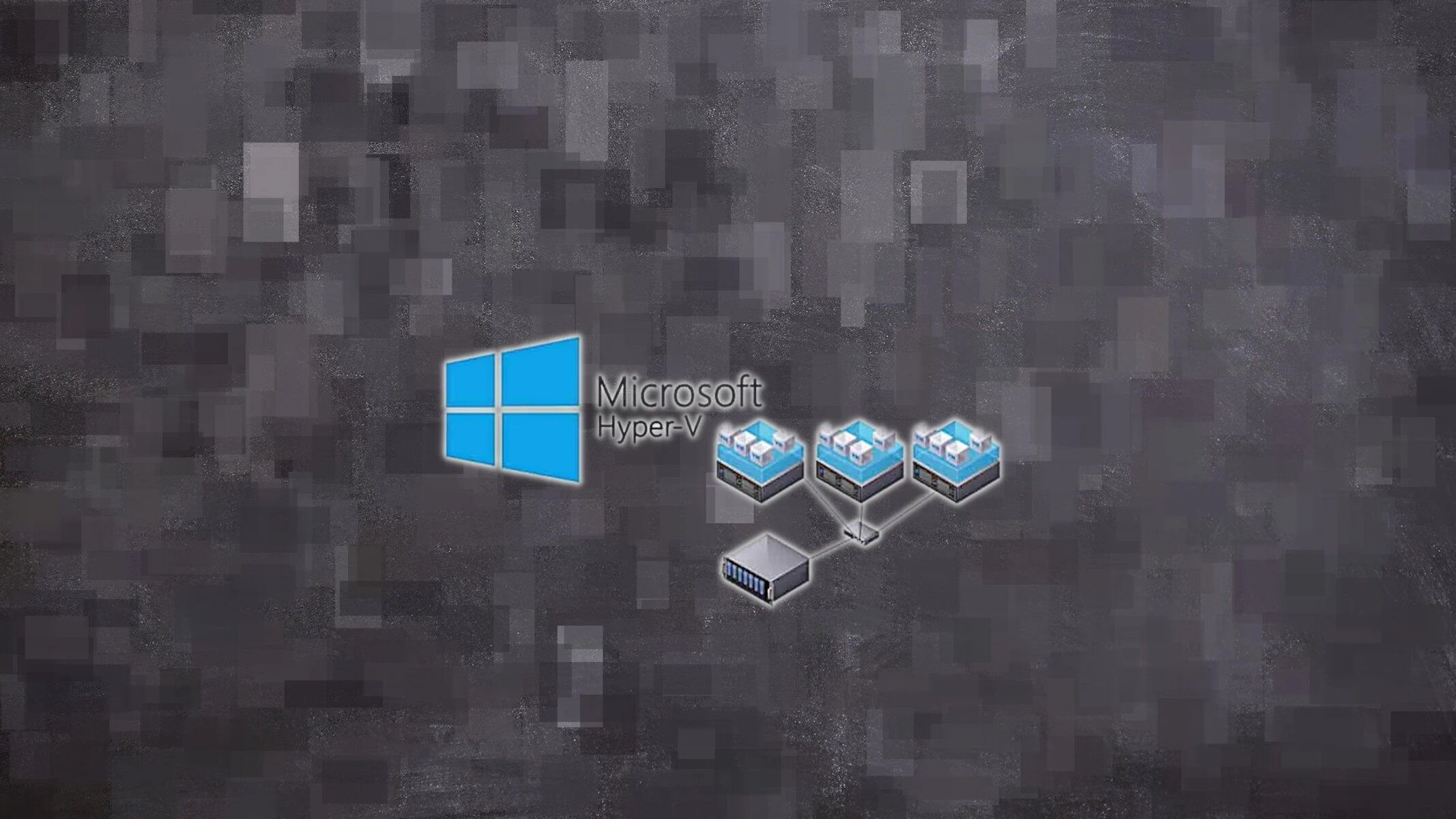Introduction
Transferring files to a Hyper-V virtual machine is a crucial task for system administrators and IT professionals. Whether you need to install software, update configurations, or transfer important data, having a seamless method to transfer files to a virtual machine is essential.
Hyper-V is a virtualization platform provided by Microsoft that allows you to create and manage virtual machines. It offers a variety of tools and options to enable file transfer, ensuring that you can easily access and transfer files between the host machine and the virtual machine. In this article, we will explore different methods that you can use to transfer files to a Hyper-V virtual machine.
Before diving into the methods, it is important to note that the host machine and the virtual machine must be connected to a common network, and you should have appropriate administrative privileges on both systems. This ensures that you have the necessary access and permissions to perform file transfers.
In the following sections, we will discuss three methods that you can use to transfer files to a Hyper-V virtual machine. These methods include using the Virtual Machine Connection, utilizing Remote Desktop Connection, and leveraging Windows PowerShell. Each method offers its own advantages and may be more suitable depending on your specific requirements and preferences.
By familiarizing yourself with these methods, you will have the flexibility to choose the most efficient and convenient option for transferring files to your Hyper-V virtual machine. Let’s explore each method in detail to ensure that you have the necessary tools to seamlessly transfer files and streamline your workflow within the virtual environment.
Preparing the Hyper-V Virtual Machine
Before you can transfer files to a Hyper-V virtual machine, it is important to ensure that the virtual machine is properly configured and ready to receive the files. Here are some essential steps to prepare your virtual machine for file transfers:
1. Install Integration Services: Integration Services are a set of drivers and tools that enhance the performance and functionality of virtual machines. Make sure that Integration Services are installed on your virtual machine. To do this, navigate to the Hyper-V Manager, select your virtual machine, and click on “Action” in the menu bar. Then, select “Insert Integration Services Setup Disk” and follow the on-screen instructions to complete the installation.
2. Set up a Shared Folder: Setting up a shared folder between the host machine and the virtual machine allows for seamless file transfers. In the settings of your virtual machine, navigate to “Integration Services” and enable the option for “Guest services.” Once enabled, you can create a shared folder by specifying a path on the host machine. This shared folder will be accessible from the virtual machine, allowing you to easily transfer files back and forth.
3. Configure Network Settings: Ensure that the virtual machine is properly connected to the network. To do this, open the settings of your virtual machine, navigate to “Network Adapter,” and select the appropriate network connection. Verify that the virtual machine has a valid IP address and is able to communicate with the host machine and other devices on the network.
4. Enable Remote Desktop: Enabling Remote Desktop on your virtual machine allows you to establish a remote connection and access the desktop interface. To enable Remote Desktop, open the settings of your virtual machine, navigate to “System,” and select “Remote Desktop.” Enable the option for “Allow remote connections to this computer.” Note down the IP address or the hostname of the virtual machine for future reference.
By following these steps, you will ensure that your Hyper-V virtual machine is properly configured and ready to receive files. With the necessary drivers, shared folder, network connectivity, and Remote Desktop access, you can easily transfer files using the methods described in the subsequent sections.
Method 1: Using the Virtual Machine Connection
The Virtual Machine Connection is a built-in feature of Hyper-V that allows you to establish a direct connection to the virtual machine’s console. This method provides a simple and straightforward way to transfer files between the host machine and the virtual machine. Follow these steps to use the Virtual Machine Connection for file transfer:
1. Start the Virtual Machine: Begin by starting the virtual machine that you want to transfer files to. Make sure that the virtual machine is running and ready to accept the file transfer.
2. Open the Virtual Machine Connection: On the host machine, open the Hyper-V Manager and select your virtual machine. Right-click on the virtual machine and choose “Connect” to open the Virtual Machine Connection.
3. Navigate to the File Transfer Window: Inside the Virtual Machine Connection window, go to the “Media” tab in the menu bar and select “Insert Disk” and then “Virtual Disk.” This will open the file transfer window, allowing you to browse files on the host machine.
4. Choose Files to Transfer: In the file transfer window, browse the files and folders on the host machine that you want to transfer to the virtual machine. Select the files or folders and click on the “Copy To” button to begin the transfer process.
5. Specify Destination: After clicking on “Copy To,” choose the destination location within the virtual machine where you want to transfer the files. You can select an existing folder or create a new one if needed.
6. Start the File Transfer: Once the destination folder is selected, click on the “Copy” button to initiate the file transfer. The selected files will be copied from the host machine to the specified location within the virtual machine.
By following these steps, you can easily transfer files to a Hyper-V virtual machine using the Virtual Machine Connection. This method provides a direct and intuitive approach to file transfer, allowing you to manage and transfer files efficiently between the host machine and the virtual machine. Let’s explore another method that can be used for file transfer in the next section.
Method 2: Using Remote Desktop Connection
Remote Desktop Connection is a powerful tool that allows you to establish a remote connection to your Hyper-V virtual machine. This method enables you to transfer files between the host machine and the virtual machine by accessing the desktop interface remotely. Follow these steps to use Remote Desktop Connection for file transfer:
1. Enable Remote Desktop: Ensure that Remote Desktop is enabled on your Hyper-V virtual machine. You can do this by following the steps mentioned in the “Preparing the Hyper-V Virtual Machine” section of this article.
2. Connect to the Virtual Machine: On the host machine, open the Remote Desktop Connection application. Enter the IP address or hostname of the virtual machine in the “Computer” field and click on the “Connect” button.
3. Enter Credentials: Provide the necessary login credentials to establish the remote connection to the virtual machine. Ensure that you have administrative privileges to access the virtual machine.
4. Transfer Files: Once connected to the virtual machine’s desktop interface, you can transfer files using various methods. You can simply drag and drop files from the host machine to the virtual machine’s desktop or a preferred folder. Alternatively, you can use the copy and paste function to transfer files between the host machine and the virtual machine.
Note: It is important to ensure that the clipboard redirection option is enabled in the Remote Desktop Connection settings. To do this, click on the “Show Options” button in the Remote Desktop Connection application, navigate to the “Local Resources” tab, and under “Local devices and resources,” ensure that the “Clipboard” option is selected.
By using Remote Desktop Connection, you can securely and efficiently transfer files between the host machine and the Hyper-V virtual machine. This method provides a seamless experience by providing you with remote access to the virtual machine’s desktop interface, allowing you to perform file operations easily and efficiently. Now, let’s explore another method that can be used for file transfer in the next section.
Method 3: Using Windows PowerShell
Windows PowerShell is a powerful command-line tool that allows you to automate tasks and manage your Hyper-V virtual machines efficiently. By utilizing specific PowerShell cmdlets, you can easily transfer files between the host machine and the virtual machine. Follow these steps to use Windows PowerShell for file transfer:
1. Open Windows PowerShell: On the host machine, open Windows PowerShell. You can do this by searching for “PowerShell” in the Start menu or using the “Run” dialog box by pressing Windows + R and typing “PowerShell.”
2. Connect to the Virtual Machine: Use the Connect-VM cmdlet to establish a connection to the virtual machine. Enter the name of the virtual machine as the parameter. For example: Connect-VM -Name “VirtualMachineName”
3. Transfer Files: Once connected to the virtual machine through PowerShell, you can use the Copy-VMFile cmdlet to transfer files. Specify the source file path on the host machine, the destination file path on the virtual machine, and the virtual machine name as the parameters. For example: Copy-VMFile -Name “VirtualMachineName” -SourcePath “C:\Path\to\File.txt” -DestinationPath “D:\Path\to\Destination\File.txt”
4. Monitor File Transfer: You can monitor the progress of the file transfer by using the -Passthru parameter in the Copy-VMFile cmdlet. This will display a progress bar in the PowerShell window, providing real-time updates on the file transfer.
Note: Ensure that you have the necessary permissions and administrative privileges to access the virtual machine and perform file transfers using PowerShell. Additionally, make sure that the appropriate file paths and names are used when executing the Copy-VMFile cmdlet.
Using Windows PowerShell provides a flexible and efficient method for transferring files to Hyper-V virtual machines. It allows you to automate file transfers and perform them in a controlled and seamless manner. By leveraging the power of PowerShell, you can streamline your workflow and manage file transfers with ease. Experiment with different PowerShell cmdlets and options to customize your file transfer process according to your specific needs.
Conclusion
Transferring files to a Hyper-V virtual machine is essential for system administrators and IT professionals. Having efficient and reliable methods for file transfer ensures seamless communication between the host machine and the virtual machine. In this article, we explored three methods to transfer files to a Hyper-V virtual machine: using the Virtual Machine Connection, utilizing Remote Desktop Connection, and leveraging Windows PowerShell.
The Virtual Machine Connection provides a straightforward approach with its built-in file transfer feature. By following a few simple steps, you can easily transfer files between the host machine and the virtual machine, enhancing collaboration and data exchange.
Remote Desktop Connection offers remote desktop access to the virtual machine’s interface. With this method, you can transfer files by simply dragging and dropping them or using the copy and paste function. This provides convenience and flexibility, particularly when you need to manage files and perform other tasks on the virtual machine remotely.
Windows PowerShell is a powerful tool that allows for automation and scripting. By using specific PowerShell cmdlets like Connect-VM and Copy-VMFile, you can effortlessly transfer files between the host machine and the virtual machine. This method is ideal for tasks that require automation or when you prefer a command-line approach.
By familiarizing yourself with these methods, you will have the necessary tools to transfer files to your Hyper-V virtual machine efficiently. Each method offers its own advantages, so you can choose the one that best suits your workflow and preferences.
Remember to prepare your virtual machine by installing Integration Services, setting up a shared folder, and configuring network settings. These steps ensure a smooth workflow and seamless file transfers.
In conclusion, adopting the right file transfer method for your Hyper-V virtual machine can streamline your work processes and enhance collaboration between your host machine and virtual machine. Explore and utilize these methods to efficiently transfer files and unlock the full potential of your virtual environment.

























